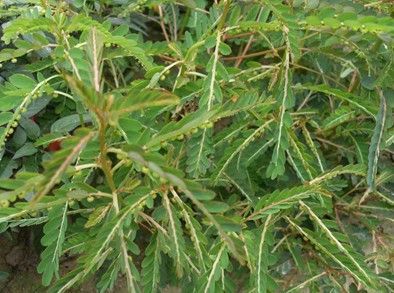Identification Character identification: Whole plant more branches, long 20-40cm. Root conical, 1-4mm in diameter; surface brown-yellow, longitudinal wrinkles, fine roots. Stems clustered, slender, 12-30cm long, dark yellowish green, with longitudinal ribs; crisp, easily broken, hollow section. Leaves alternate, linear-lanceolate, 1-3cm long, 0.5-15mm wide, grayish green. The flowers are solitary in leaf axils and nearly sessile. Nuts are nearly spherical, with a diameter of about 2mm, and the surface is gray-yellow. There are reticular glyphs, and there are two leafy bracts. Gas slightly, tasteless. More fruit, grayish green, and no muddy sand are preferred. Microscopic identification: Stem cross section: round in shape, with 5-10 edges. Epidermal cells are rectangular and slightly thicker outside. The outer layer of the cortex is 2-3 columns thicker and the ribs are more developed; the parenchyma cells are oval or round and the inward cells are getting larger. The plexifilamentary fiber bundle is cap-shaped and is located outside the phloem. Vascular external toughness. The formation of layers is usually not obvious. Xylem catheters are round or oval in shape, with a diameter of 13-33μm, scattered in a single or 2-3 clusters; wood rays are one column wide cells, thicker walls, and woody. The pith is often caused by the rupture of parenchyma cells as a cross-section of the hollow leaf: the upper and lower epidermal cells are similar, round, oval or irregular shape, the outer side is usually papillary; the lateral surface of the green outer layer of the leaf is stratum corneum. The mesophyll cell differentiation was not obvious, parenchyma cells containing calcium oxalate crystals. The main vascular bundle is externally tough and well developed in the xylem. Leaf surface view: The upper and lower epidermal cells are polygonal or rectangular, and the vertical wall is straight. Stomatal type. Leaf margin cells often have cuticle protrusions. Physical and chemical identification powder 1g, add methanol 10ml, reflux extraction 30min, filtered. Take filtrate 5ml, add a small amount of hydrochloric acid and magnesium powder, orange-red. Sprinkler irrigation and micro-irrigation automatic control equipment With the development of economy, water resources, energy shortage and labor cost increase, more and more water-saving irrigation systems will adopt automatic control. This article focuses on the advantages and classification of automated irrigation. Degree Irrigation Nozzle,Irrigation for Agriculture,Impact Drive Sprinkler,Plastic Drip Irrigation Fittings JIANGSU SKYPLAN GREENHOUSE TECHNOLOGY CO.,LTD , https://www.skyplantgreenhouse.com
The advantages are as follows:
(1) It is possible to truly control the amount of irrigation, irrigation time and irrigation cycle in a timely and appropriate manner, thereby increasing crop yield and significantly improving water utilization.
(2) Saving labor and operating expenses.
(3) The work plan can be arranged conveniently and flexibly, and the management personnel do not have to go to the field at night or other inconvenient time.
(4) Since it can increase the effective working time every day, the initial capital investment in pipelines, pumping stations, etc. can be reduced accordingly.
classification:
First, fully automated irrigation system
The fully automated irrigation system does not require direct human involvement. The pre-programmed control procedures and certain parameters that reflect the water requirements of the crop can automatically open and close the pump for a long time and automatically irrigate in a certain order. The role of the person is simply to adjust the control program and overhaul the control equipment. In this system, in addition to emitters (heads, drip heads, etc.), pipes, fittings, pumps, and motors, it also includes central controllers, automatic valves, sensors (soil moisture sensors, temperature sensors, pressure sensors, water level sensors, and rain sensors). Etc.) and wires.
Second, semi-automatic irrigation system
In the semi-automated irrigation system, no sensors are installed in the field. The irrigation time, irrigation volume and irrigation period are controlled according to pre-programmed procedures, rather than feedback based on crop and soil moisture and meteorological conditions. The degree of automation of such systems is very different. For example, some pump stations implement automatic control, and some pump stations use manual control. Some central controllers are only one timer with simple programming function, and some systems have no central control. The controller, but only some of the sequential switching valves or volume valves are installed on each branch pipe.
Automated irrigation is the trend of the times. In the future water-saving irrigation projects, more and more automated irrigation systems will be applied.
Identification of pearl grass
Next Article
Key measures for breeding ducklings in the spring
Prev Article
Common food additives and hazards - preservatives